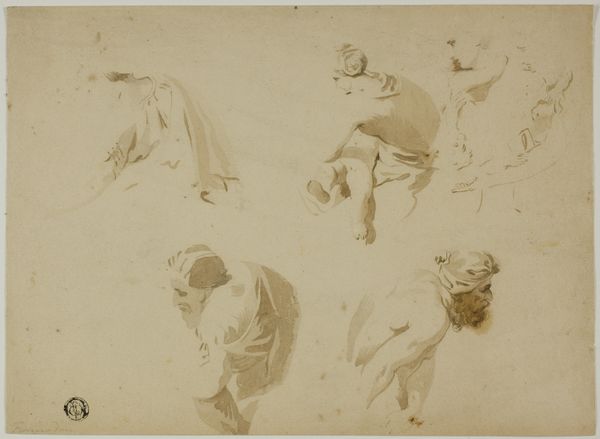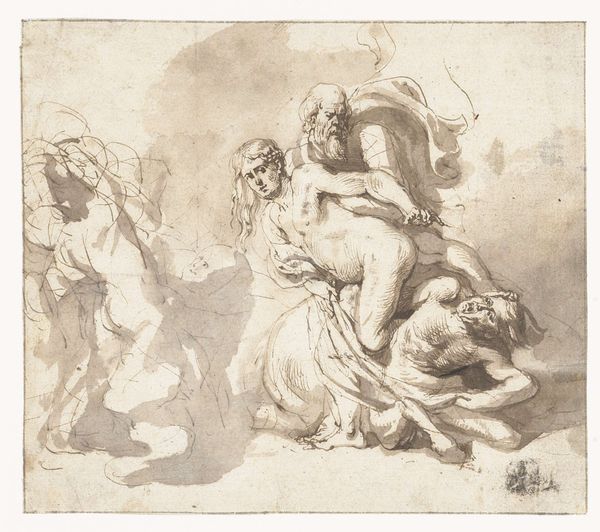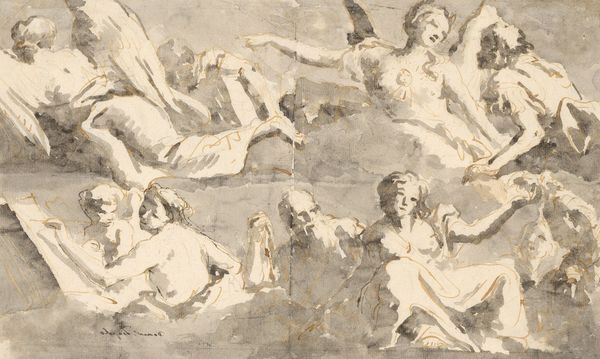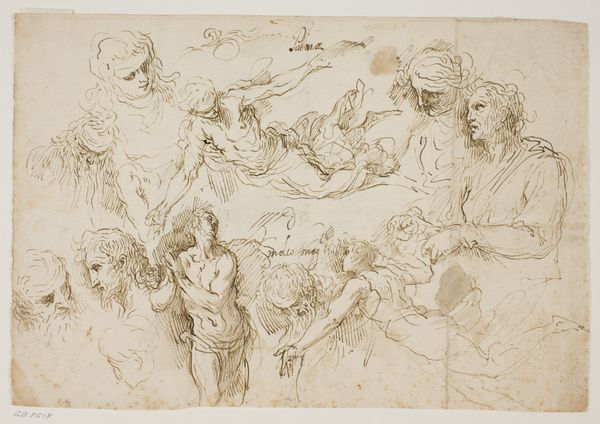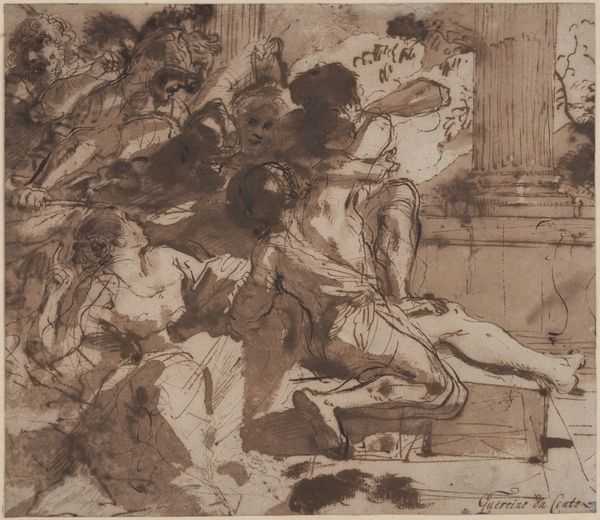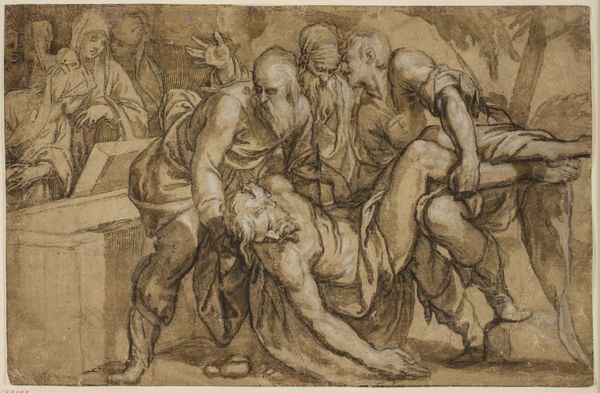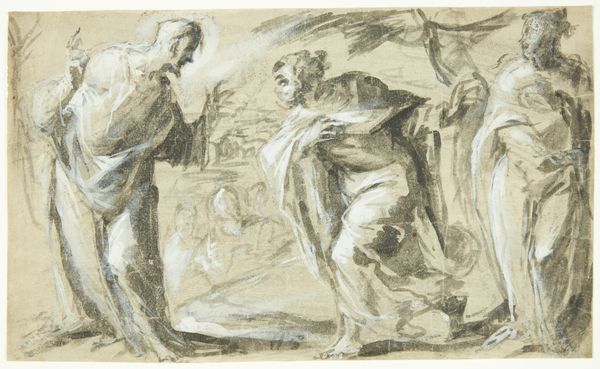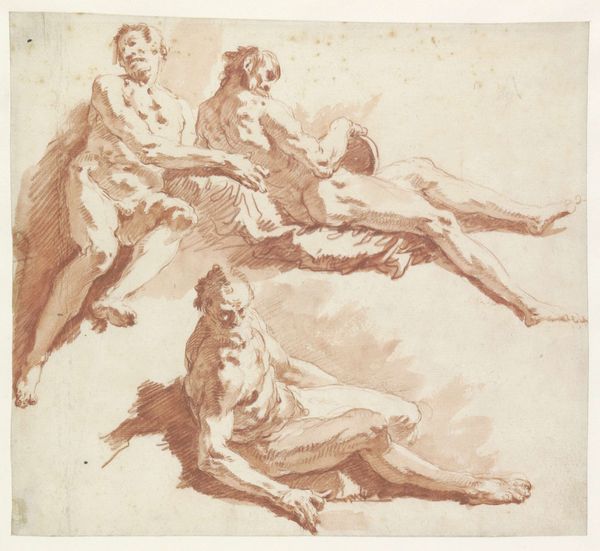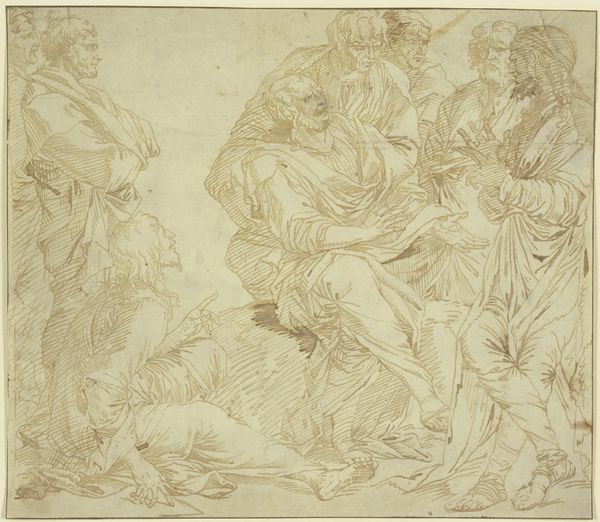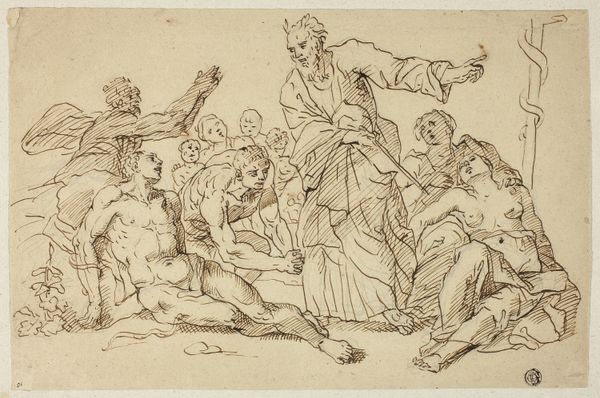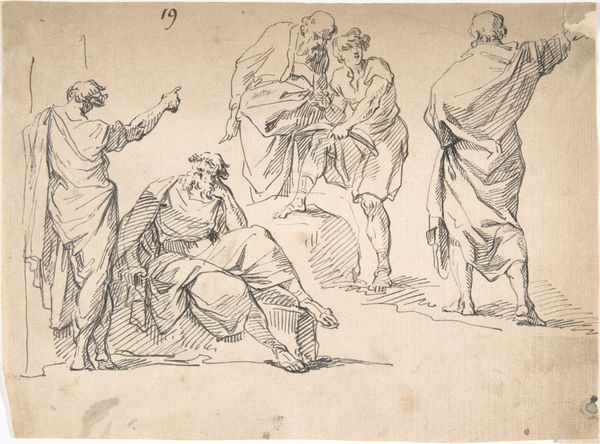
Studieblad met vier mannen te paard en een op een steen 1606 - 1674
0:00
0:00
drawing, paper, pencil
#
drawing
#
baroque
#
pencil sketch
#
figuration
#
paper
#
pencil drawing
#
pencil
#
genre-painting
Dimensions: height 210 mm, width 268 mm
Copyright: Rijks Museum: Open Domain
Editor: This is "Studieblad met vier mannen te paard en een op een steen" or "Study Sheet with Four Men on Horseback and One on a Stone," a pencil drawing on paper by Leonaert Bramer, created sometime between 1606 and 1674. I'm really struck by how casual and informal the poses are. What can you tell me about how this piece might have been received in its time? Curator: It’s important to remember that drawings like this, while seemingly casual to our eyes, were instrumental in the artistic process of the Baroque era. Bramer wasn’t necessarily creating a finished work for public display. More likely, this was a preparatory sketch, a way of working through poses and compositions before embarking on a larger painting. Think of it as the artist’s private laboratory. Editor: So, it wasn’t meant for public consumption necessarily? Curator: Exactly. These ‘study sheets’ offer fascinating glimpses into the artist’s process. Considering the social context, artists were increasingly interested in portraying realistic and believable figures, moving away from more idealized forms. Bramer’s drawing would have been valued as a resource within his studio, perhaps for training assistants, demonstrating particular techniques, or recording observed figures, acting almost as a visual notebook. It becomes interesting to look at such drawings within the public realm in institutions today. What do you think its display signifies? Editor: I guess it gives modern viewers access to something previously private. The fact that it’s displayed now gives the artwork value it didn't previously have, as now, we have a way to analyse and appreciate his way of capturing figures with dynamic energy. Curator: Precisely. The political and cultural role of museums in assigning value is constantly in flux. It makes you wonder, doesn't it, what other everyday art might be deemed historically and socially important later down the line? Editor: That's really interesting, and it makes me see this artwork – and the role of art institutions – in a completely new light. Thank you!
Comments
No comments
Be the first to comment and join the conversation on the ultimate creative platform.
